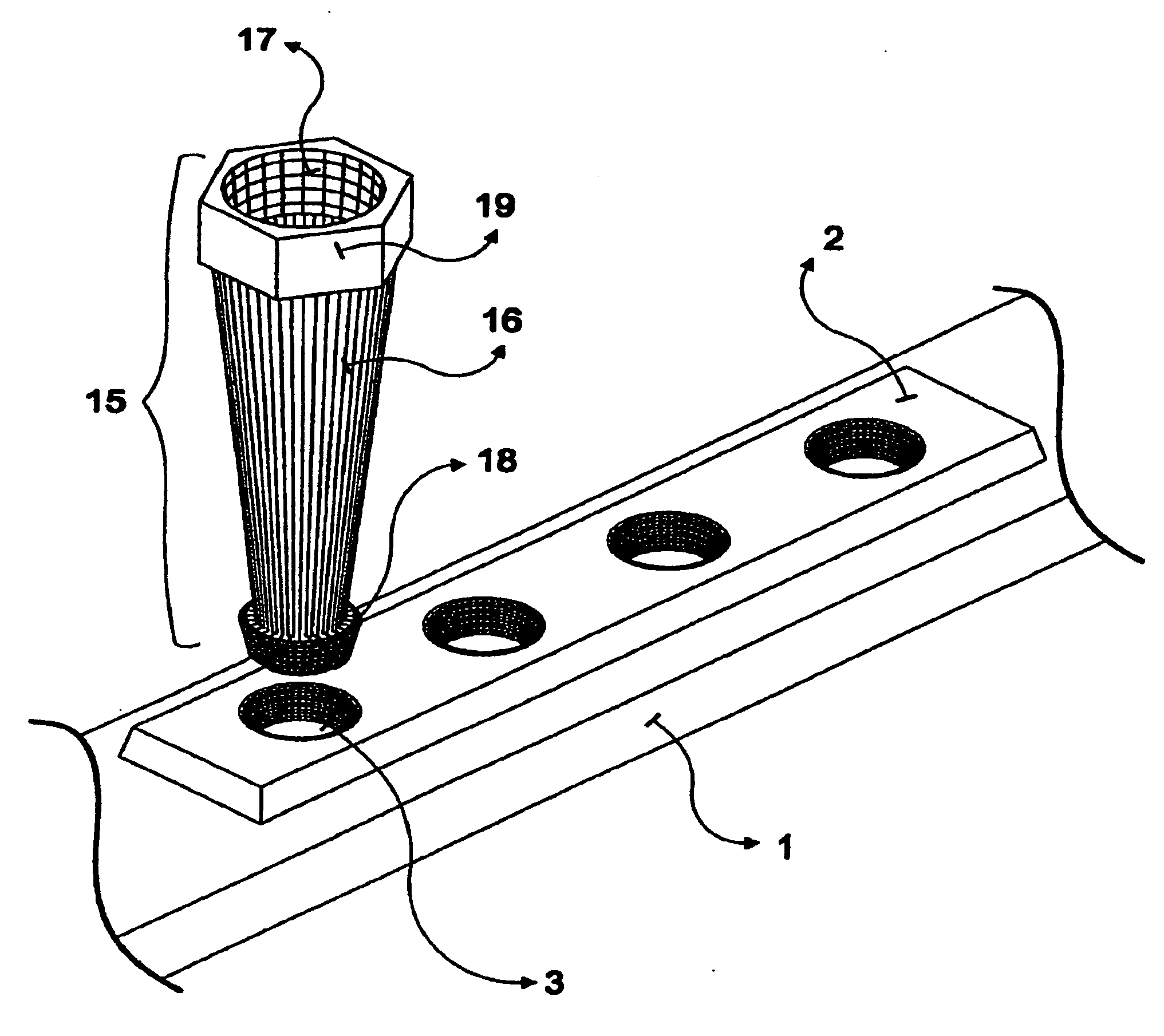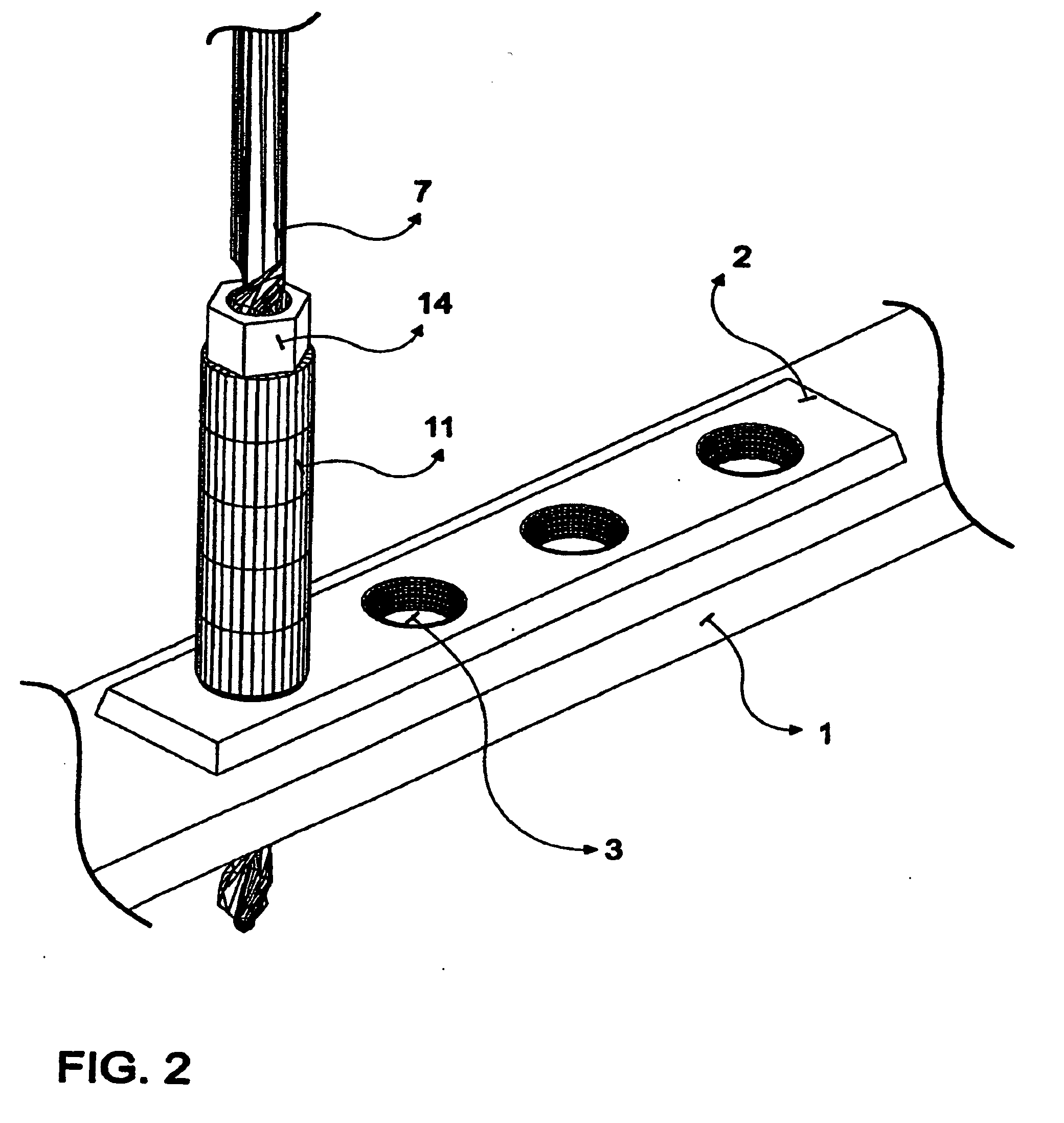Locking Bone Plates with Controlled Locking Screw Misalignment
a technology of locking screw and screw, which is applied in the field of implanted bone plate system, can solve the problems of difficulty in removing the screw afterward, and achieve the effects of less bone vascular damage, improved infection resistance, and safe and reliable removal
- Summary
- Abstract
- Description
- Claims
- Application Information
AI Technical Summary
Benefits of technology
Problems solved by technology
Method used
Image
Examples
Embodiment Construction
[0022]FIGS. 1-4 illustrate a conventional locking bone plate system that includes a conventional locking plate 2, a conventional cylindrical drilling sleeve 10, and a conventional locking screw 4.
[0023]Conventional bone plate 2 typically has at least two threaded holes, which in this example are conical threaded holes 3, designed to receive locking screws 4. Locking screws 4 have a threaded head 5, which in this example is conically shaped, and a threaded shaft 6 extending from head 5. The external threads on threaded head 5 mate with and preferably perfectly match the female threads in each of plate holes 3.
[0024]Conventional cylindrical sleeve 10 has a threaded head 13 that also mates with and preferably perfectly matches the female threads in each of plate holes 3.
[0025]Once the conventional cylindrical sleeve 10 is properly positioned and screwed into one of plate holes 3, as shown in FIG. 2, bore 12 in cylindrical body 11 of conventional sleeve 10 is operative to guide drill bi...
PUM
 Login to View More
Login to View More Abstract
Description
Claims
Application Information
 Login to View More
Login to View More - R&D
- Intellectual Property
- Life Sciences
- Materials
- Tech Scout
- Unparalleled Data Quality
- Higher Quality Content
- 60% Fewer Hallucinations
Browse by: Latest US Patents, China's latest patents, Technical Efficacy Thesaurus, Application Domain, Technology Topic, Popular Technical Reports.
© 2025 PatSnap. All rights reserved.Legal|Privacy policy|Modern Slavery Act Transparency Statement|Sitemap|About US| Contact US: help@patsnap.com



